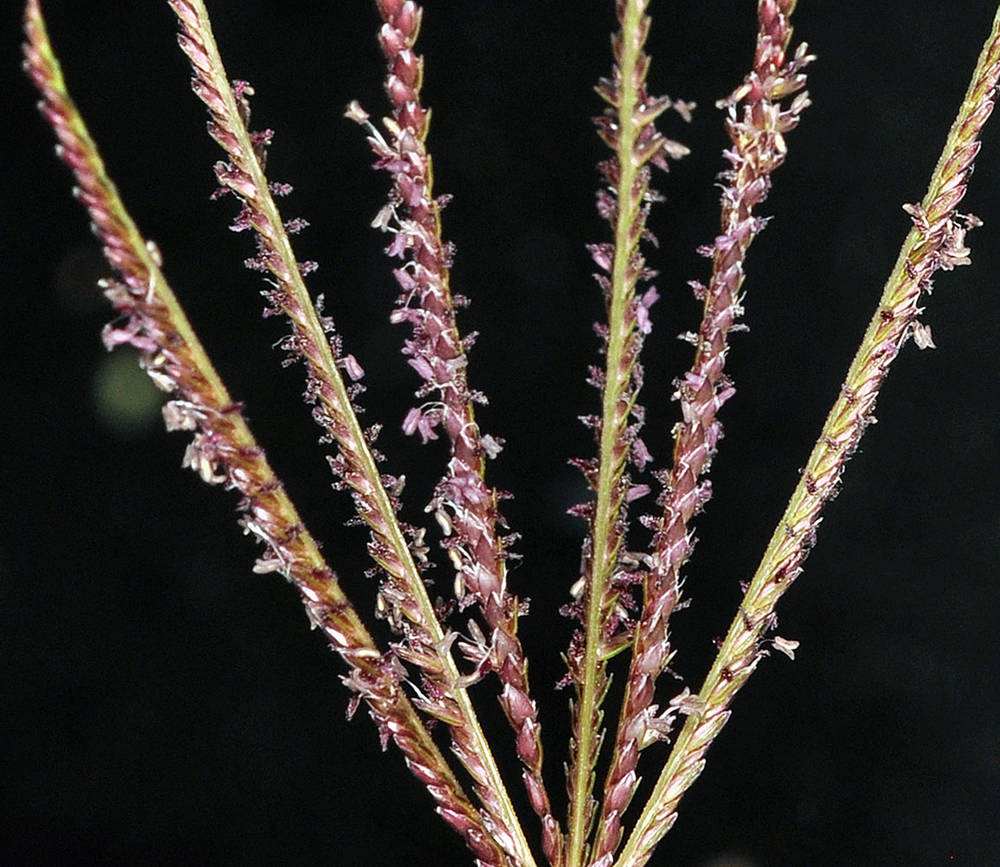Cynodon dactylon
bermudagrass
sheaths glabrous or with scattered hairs;
blades 1–6(16)cm × (1)2–4(5)mm; flat or folded, glabrous or upper adaxial surface with spreading hairs.
with 1 whorl of (3)4–7(9) spike-like branches 1.4–6 cm × 1–2 mm;
spikelets in 2 rows on one side of each branch.
2–3.2 mm.
1-veined;
lower glumes 1.2–2 mm;
upper glumes 1.4–2.3 mm.
1.9–3.1 mm, 3-veined, usually densely pubescent on the keel, sometimes pubescent on the margins; awnless.
about 1 mm, dehiscent.
=36.
Cynodon dactylon
Lawns, waste areas in urban areas and sandbars on rivers. 0–1200 m. Col, Est, Lava, Sisk, WV. CA, ID, NV, WA; throughout most of North America; worldwide. Exotic.
This grass is commonly planted for forage, lawns, and erosion control in warm climates. It readily escapes, usually in disturbed urban settings and along transportation corridors but sometimes into more natural habitats. Cynodon dactylon is highly diverse in inflorescence branch length, branch number, and lemma hairiness.
Barbara Wilson, Richard Brainerd, Nick Otting
- Local floras:
BC,
CA,
OR,
WA
- Local Web sites:
CalFlora,
CalPhotos,
Flora NW,
PNW Herbaria
WildflowerSearch
iNaturalist (observations)
USDA Plants Database
- LBJ Wildflower Center
- SEINet
- Plants of the World Online
- Encyclopedia of Life
- Wikipedia
- Google Image Search



